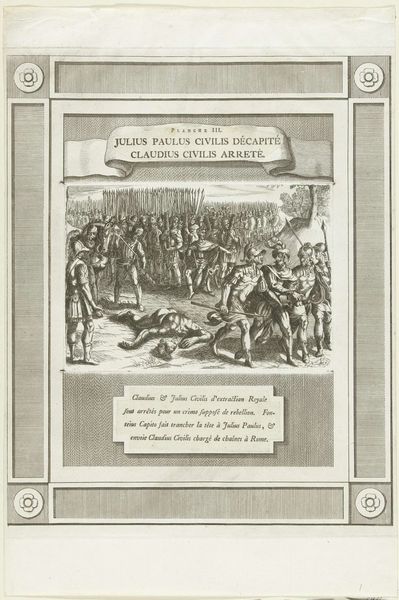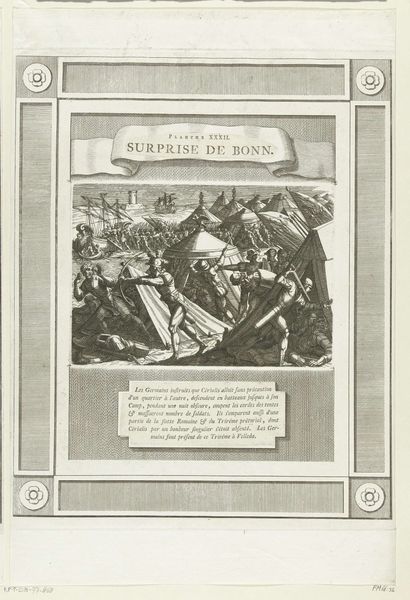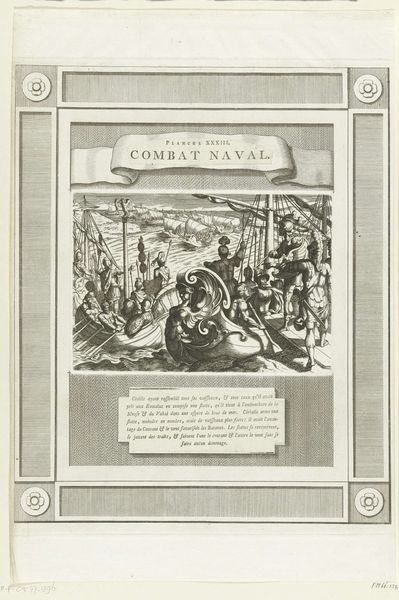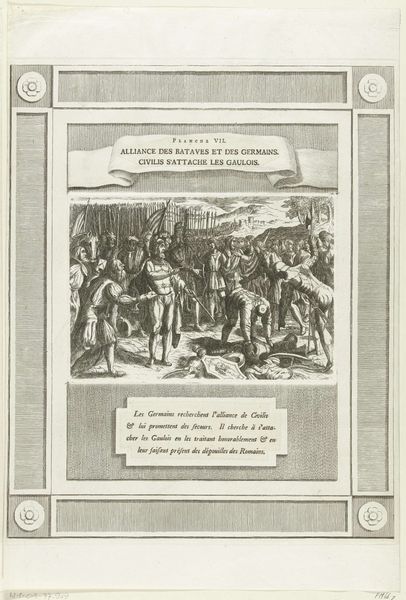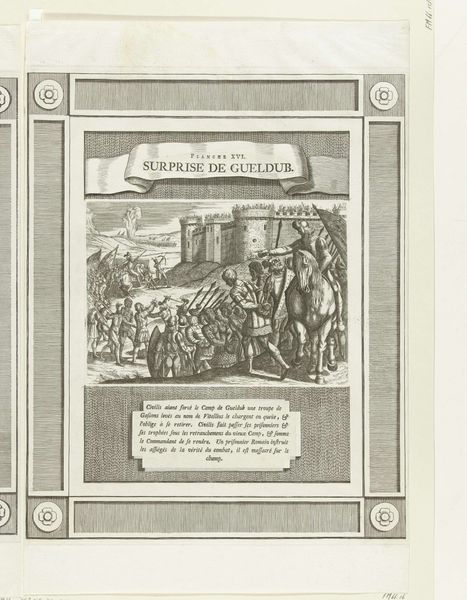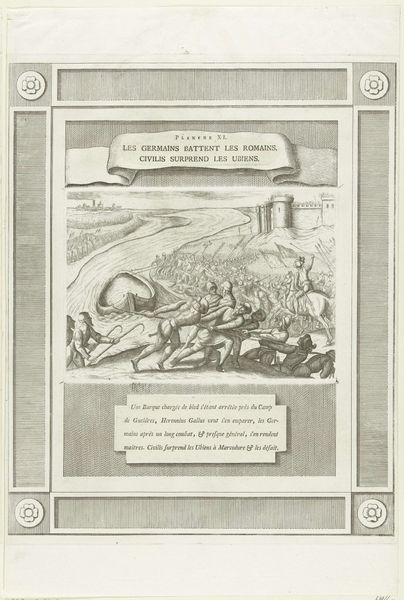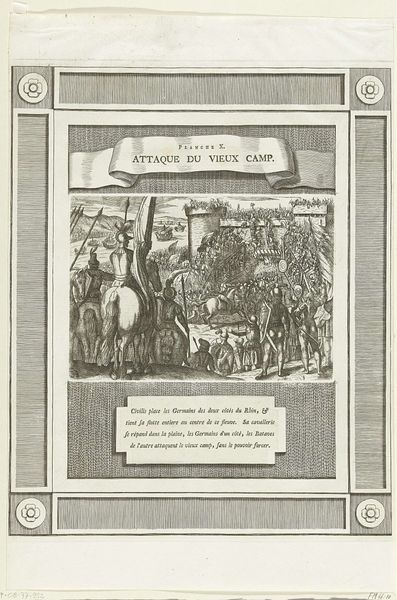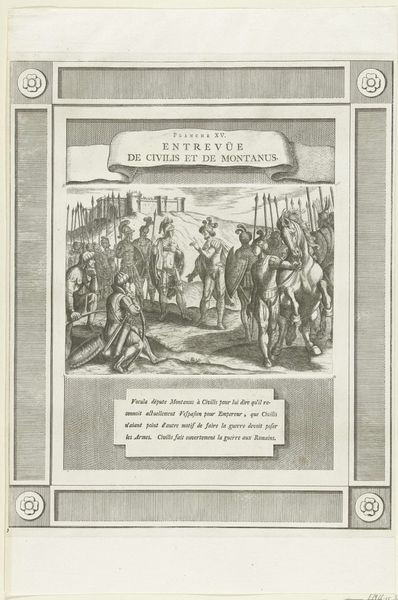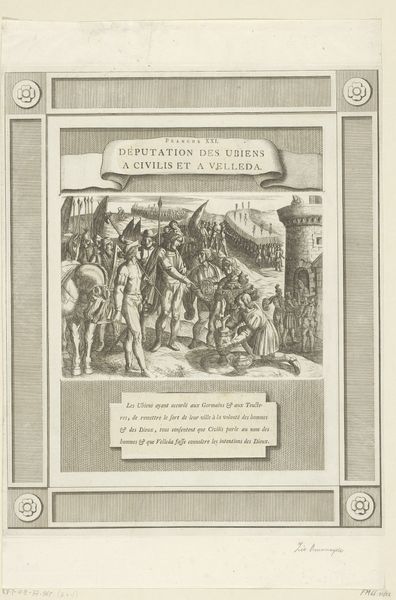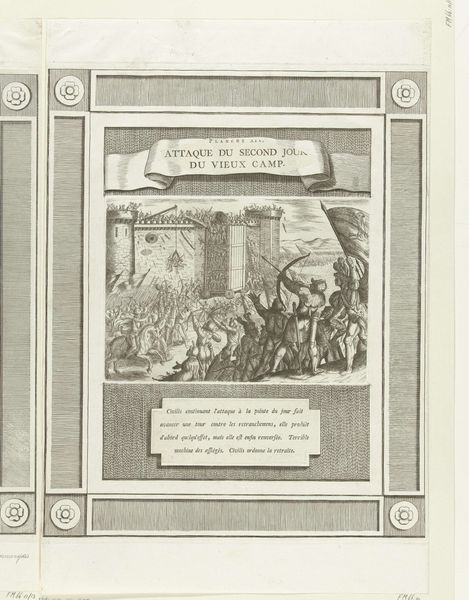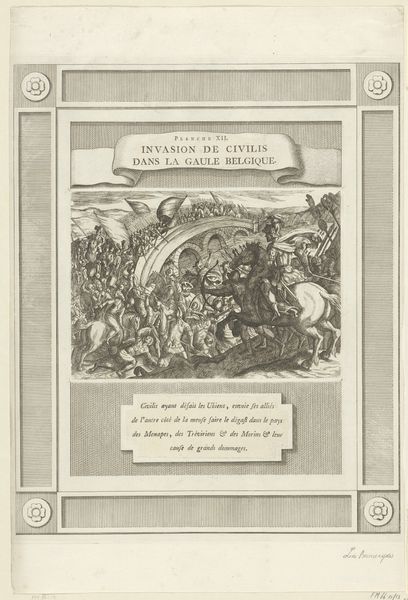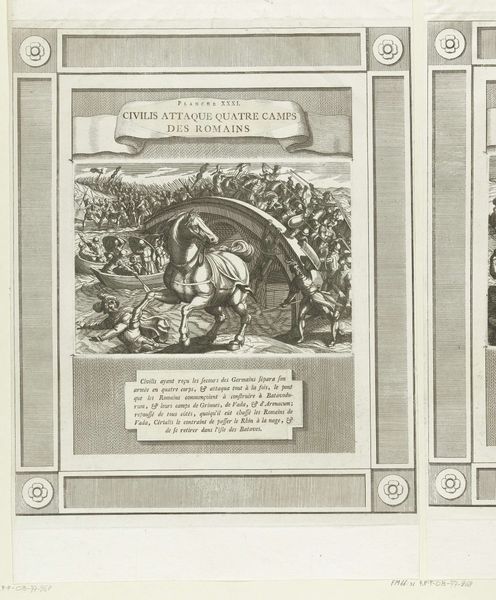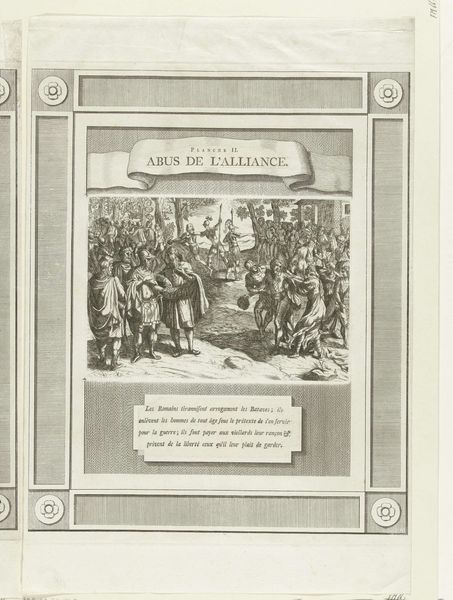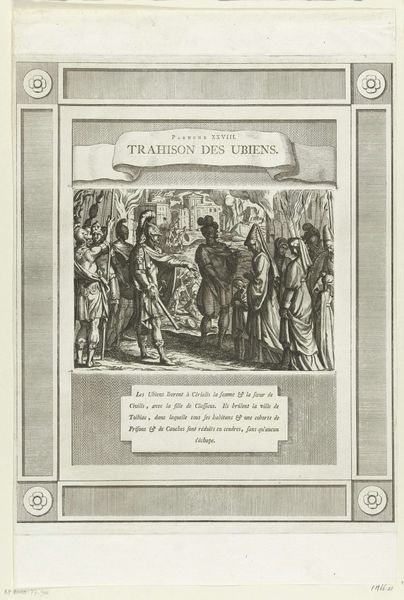
Romeinen misleid te denken dat Civilis dood of gewond is, 69-70 1768 - 1770
anonymous
Rijksmuseum
Dimensions: height 140 mm, width 202 mm, height 370 mm, width 300 mm
Copyright: Rijks Museum: Open Domain
Curator: Today we're looking at a print entitled "Romeinen misleid te denken dat Civilis dood of gewond is, 69-70," which translates to "Romans deceived into thinking Civilis is dead or wounded, 69-70," created between 1768 and 1770. It’s currently housed right here at the Rijksmuseum. Editor: What strikes me immediately is the drama of it all. Even in the tight constraints of a print, you feel the chaos and violence of battle. The lines are so agitated, it really conveys the sense of deception and struggle. Curator: Absolutely. The anonymous artist uses the conventions of Baroque art, the emphasis here being on dynamic movement and strong diagonals that guide your eye through the composition. Notice how the artist leads our gaze. We see Civilis unhorsed and presumably wounded or even dead. Editor: Seeing that image of Civilis brought low certainly gives the impression of Roman dominance, but there's more than meets the eye here, or should I say, perhaps it is misdirection? Considering the artwork's historical context, it serves as a narrative about the Batavian revolt against Roman rule, focusing on themes of resistance and deception. Curator: And that's subtly illustrated here through compositional devices. For example, observe the clear, structured portrayal of the Roman soldiers as they loom in the center, versus the implied order beyond them. Editor: Right. The manipulation and distortion within this "history painting" serve the colonialist project of control through subjugation, a dangerous game that also suggests parallels to struggles against imperial powers throughout time. What, precisely, are we to believe, or what we are lead to believe through propaganda, perhaps? Curator: Indeed. The beauty of the work lies in its skillful construction, inviting layers of interpretations—historical and contemporary, intended and unintended. Editor: In the end, we see how art from the past has the potential to illuminate power dynamics in our current political theater and social discourse, hopefully serving as a reminder that deception can manifest itself in all forms and ways of seeing, being, and knowing.
Comments
No comments
Be the first to comment and join the conversation on the ultimate creative platform.
